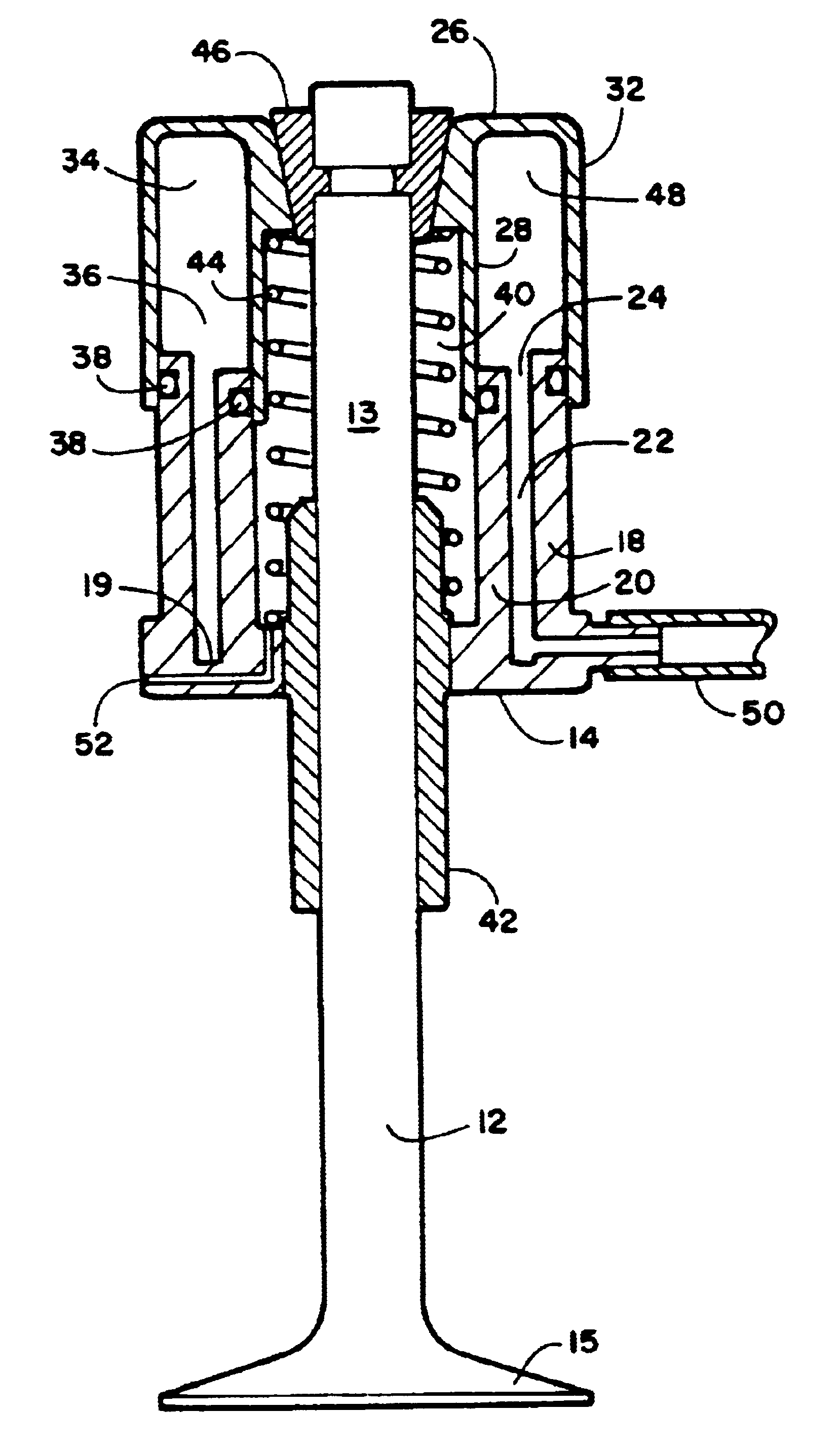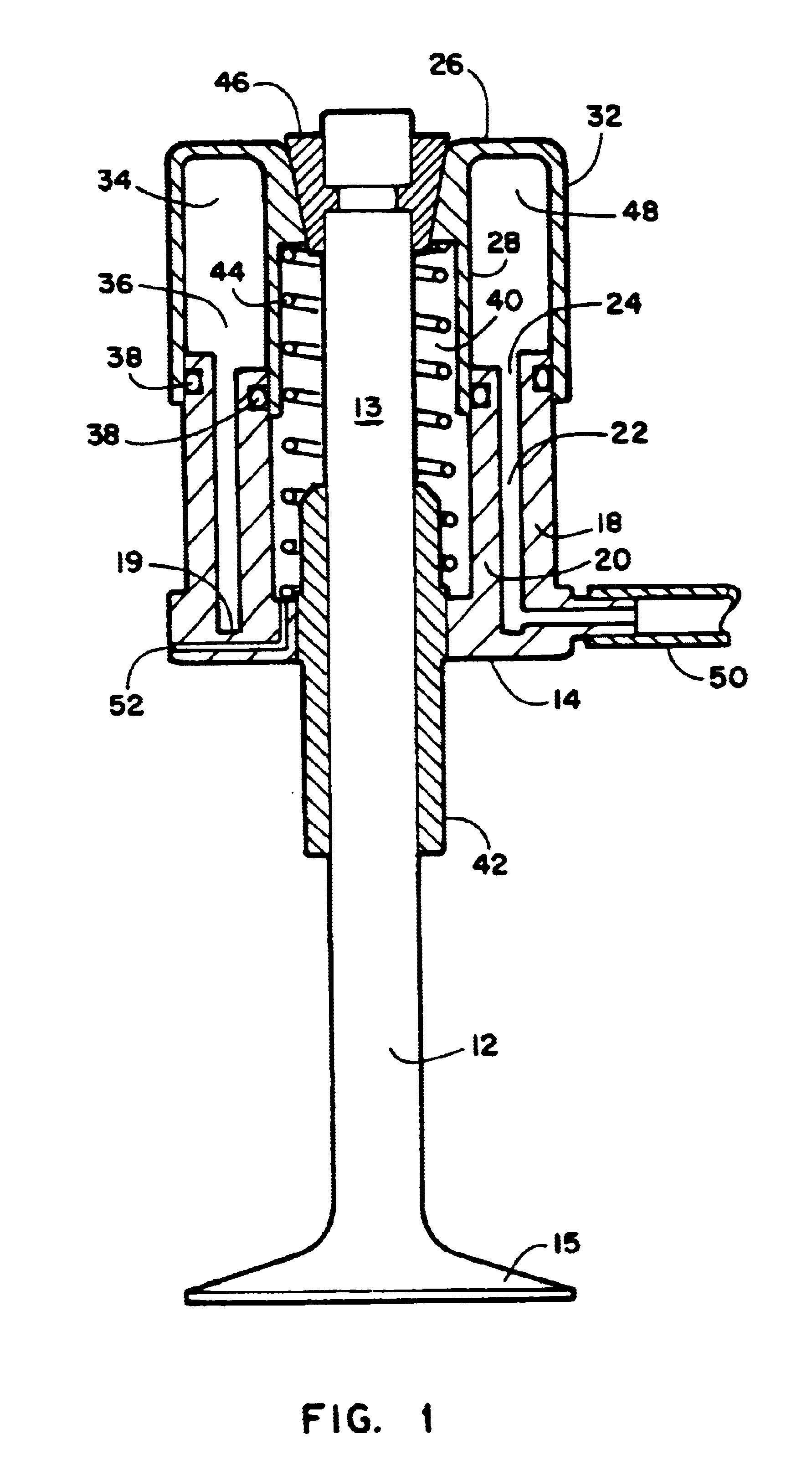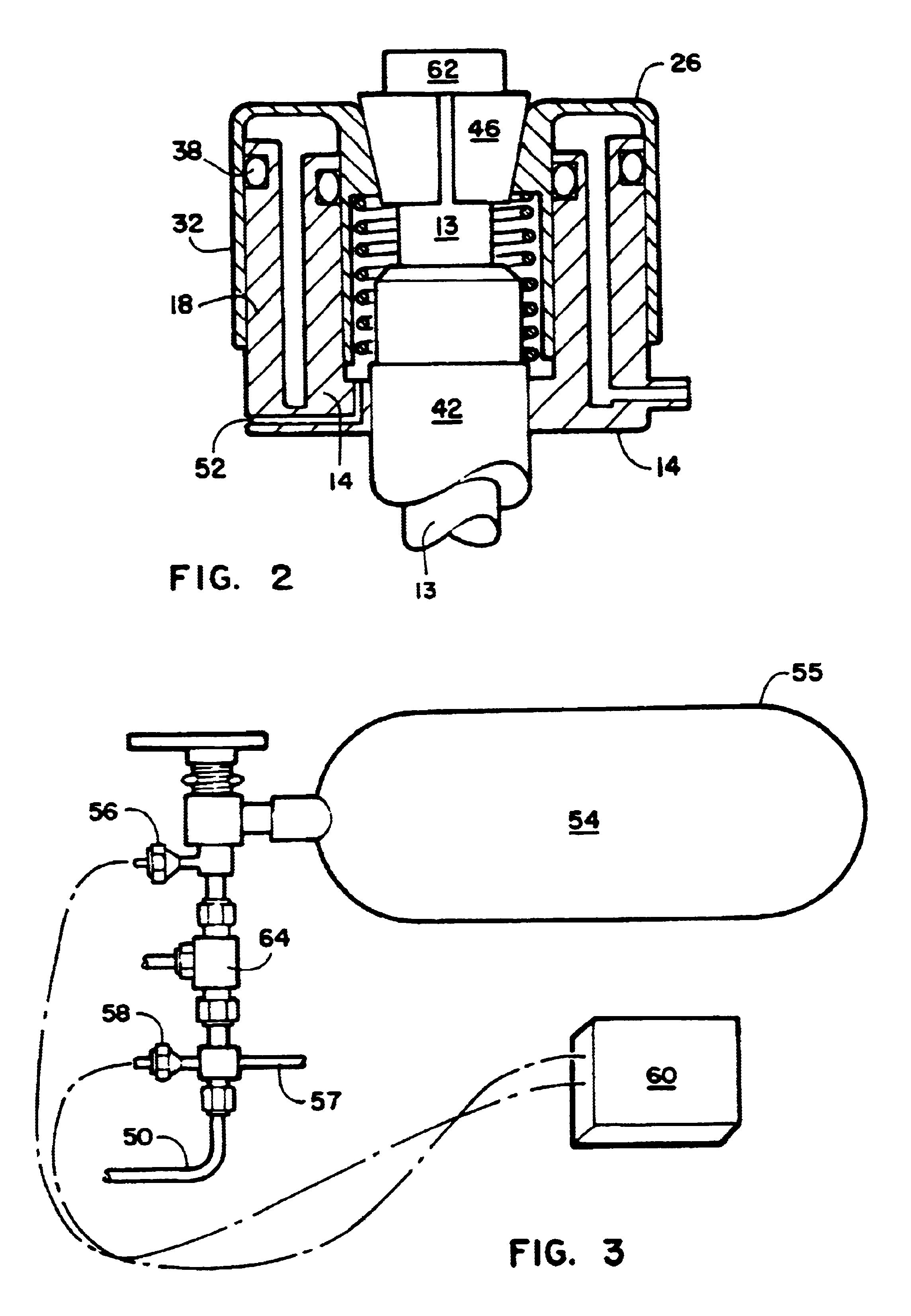Pneumatic valve return spring
a technology of pneumatic valves and return springs, which is applied in the direction of valve arrangements, non-mechanical valves, machines/engines, etc., can solve the problems of loss of performance, complicated and unreliable variation of valve timing to achieve better fuel economy or engine performance, and the loss of conventional springs and valve assemblies
- Summary
- Abstract
- Description
- Claims
- Application Information
AI Technical Summary
Benefits of technology
Problems solved by technology
Method used
Image
Examples
Embodiment Construction
Referring now to the drawings, FIGS. 1-4 disclose the pneumatic valve biasing device 10 which is used in combination with valves 12 which reciprocate between open and closed positions in conventional engines and motors which use valves 12 for both intake of fuel mixtures and exhaust of spent gases.
A static housing 14 in the current best embodiment is essentially donut shaped and is mounted to a fixed position engaged with the cylinder head or engine employing the valve 12. A static aperture 16 defined by an outer wall 18 connected by a bottom wall 19 to an inner wall 20 of the static housing 14 surrounds a conventional valve 12 used in combination herewith. The outer wall 18 of the static housing 16 is circumferentially parallel and substantially equidistant from the inner wall 20 and thereby defines a static chamber 22. An opening opposite the bottom wall 19 forms a static circular aperture 24 communicating with the static chamber 22.
The dynamic housing 26, shaped similar to the st...
PUM
 Login to View More
Login to View More Abstract
Description
Claims
Application Information
 Login to View More
Login to View More - R&D
- Intellectual Property
- Life Sciences
- Materials
- Tech Scout
- Unparalleled Data Quality
- Higher Quality Content
- 60% Fewer Hallucinations
Browse by: Latest US Patents, China's latest patents, Technical Efficacy Thesaurus, Application Domain, Technology Topic, Popular Technical Reports.
© 2025 PatSnap. All rights reserved.Legal|Privacy policy|Modern Slavery Act Transparency Statement|Sitemap|About US| Contact US: help@patsnap.com



